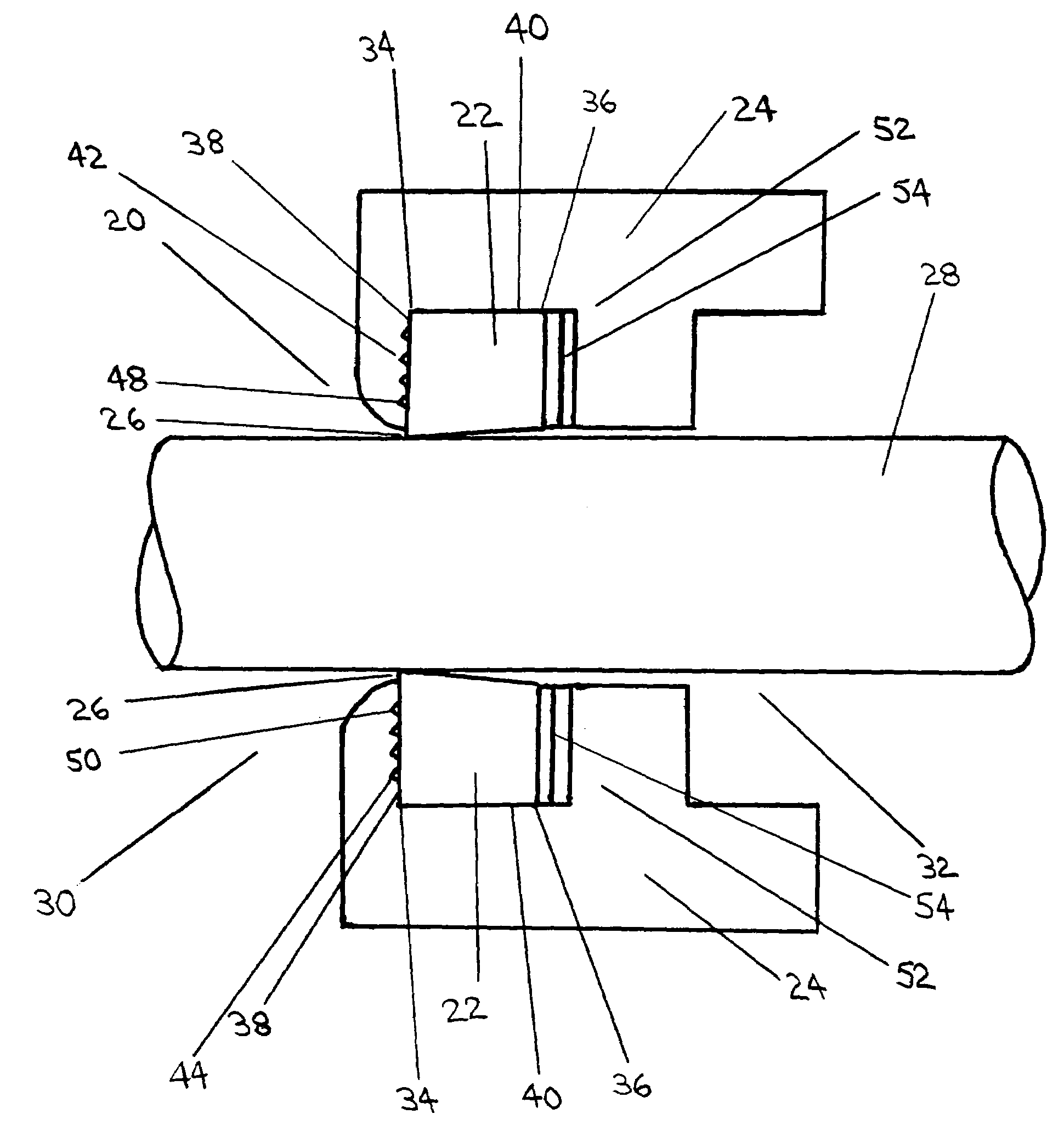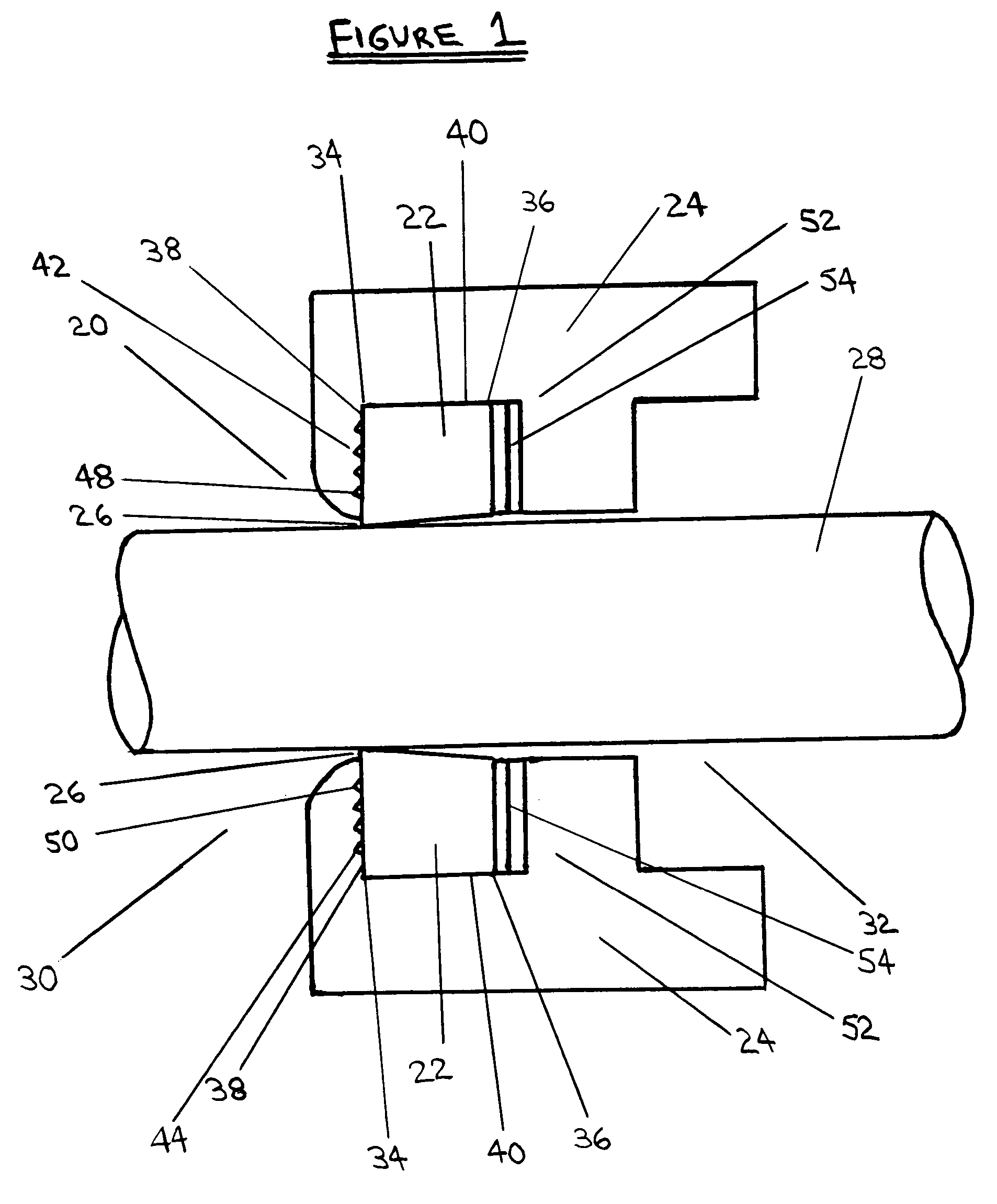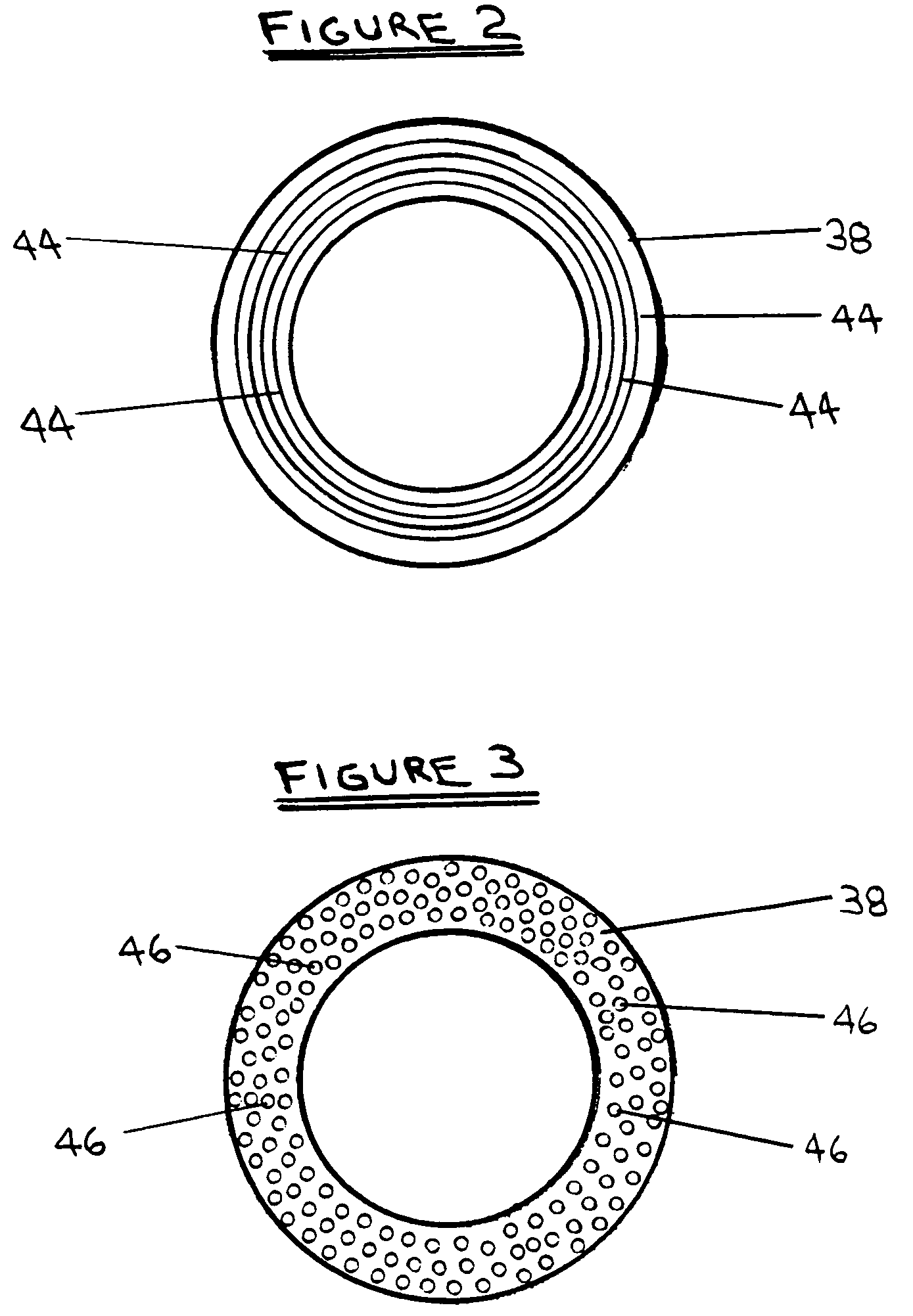Seal assembly for limiting movement of a seal within a seal housing
a sealing assembly and sealing technology, applied in the direction of engine seals, mechanical devices, engine components, etc., can solve the problems of increasing the need for spring force, affecting the sealing effect, so as to limit the distorting effect
- Summary
- Abstract
- Description
- Claims
- Application Information
AI Technical Summary
Benefits of technology
Problems solved by technology
Method used
Image
Examples
Embodiment Construction
[0032]Referring to FIG. 1, there is depicted a seal assembly (20). The seal assembly (20) includes a seal element (22) and a seal housing (24).
[0033]In the preferred embodiment the seal assembly (20) is a dynamic seal which seals between a sealing surface (26) on the seal element (22) and a rotatable shaft (28) which passes through the seal assembly (20). The seal assembly (20) may, however, be a dynamic seal which seals between the sealing surface (26) and a component which moves longitudinally relative to the seal element (22). The seal assembly (20) may also be a static seal which seals between the sealing surface (26) and a component that does not move relative to the sealing element (22). The seal assembly (20) may therefore be used in a wide range of applications requiring either static or dynamic seals.
[0034]In the preferred embodiment the seal assembly (20) is incorporated into an apparatus (not shown) which supports and contains the rotatable shaft (28). The function of the...
PUM
 Login to view more
Login to view more Abstract
Description
Claims
Application Information
 Login to view more
Login to view more - R&D Engineer
- R&D Manager
- IP Professional
- Industry Leading Data Capabilities
- Powerful AI technology
- Patent DNA Extraction
Browse by: Latest US Patents, China's latest patents, Technical Efficacy Thesaurus, Application Domain, Technology Topic.
© 2024 PatSnap. All rights reserved.Legal|Privacy policy|Modern Slavery Act Transparency Statement|Sitemap



